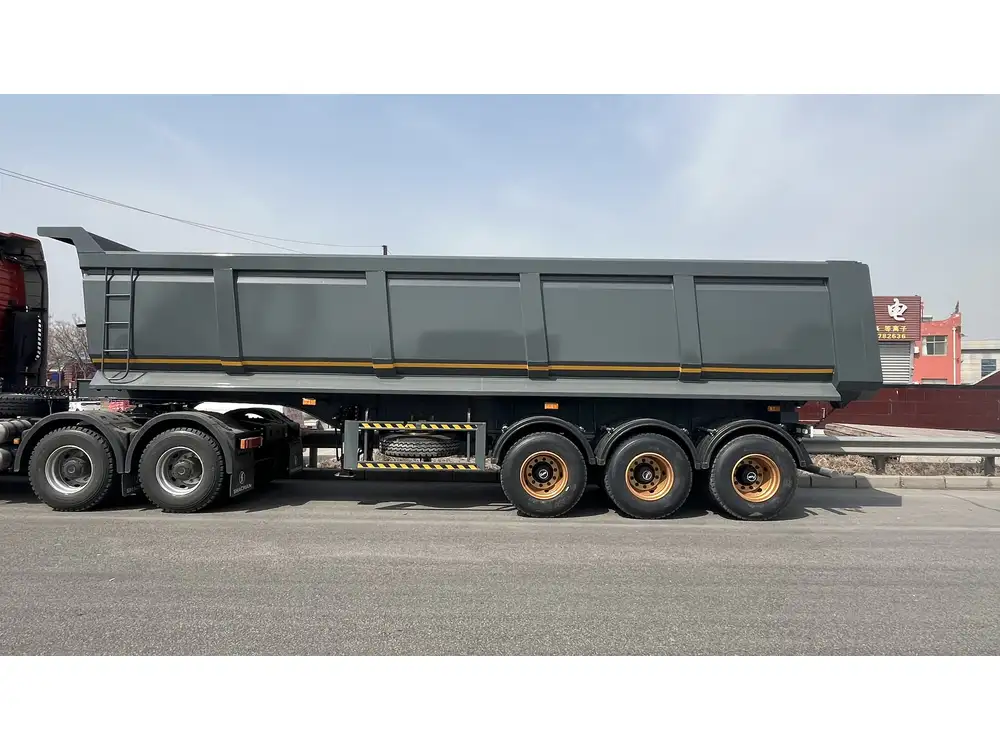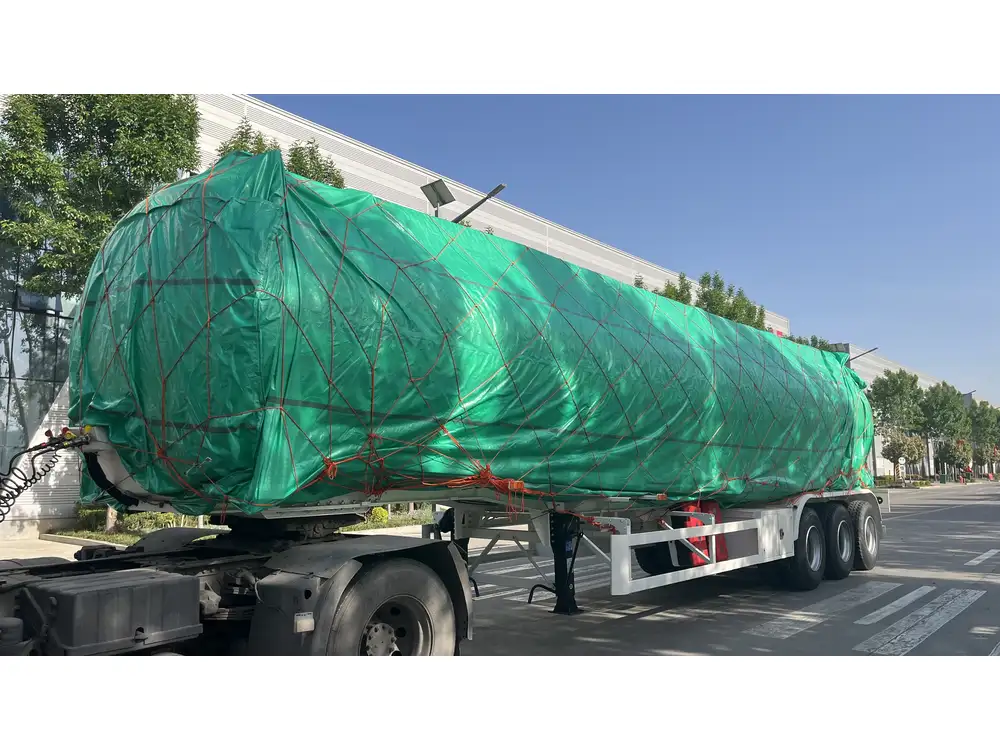Flatbed trailers are valued for their versatility and ability to transport various types of loads. However, to ensure safety and compliance with hauling regulations, installing sides on a flatbed trailer can be crucial. Whether you’re looking to improve load security, enhance your trailer’s functionality, or meet specific hauling requirements, this guide delves into the ins and outs of putting sides on a flatbed trailer.
Understanding the Importance of Sides on Flatbed Trailers
Flatbed trailers can carry everything from construction materials to large machinery. However, the absence of sides can make transporting certain loads precarious due to the risk of shifting or falling out. Adding sides can serve multiple purposes:
- Enhancing Safety: Prevents cargo from sliding or falling off during transport.
- Compliance: Meets regulations for transporting specific materials.
- Increased Efficiency: Streamlines loading and unloading processes.
- Protection from Elements: Shields cargo against environmental factors, such as wind and rain.
Before diving into the installation process, it’s essential to determine the suitable material for your trailer sides.
Material Options for Trailer Sides
Here’s a comparative overview of materials commonly used for flatbed trailer sides:
| Material | Durability | Weight | Cost | Maintenance | Flexibility |
|---|---|---|---|---|---|
| Steel | High | Heavy | Moderate | Low | Limited to fixed designs |
| Aluminum | Moderate | Lightweight | High | Low | Highly customizable |
| Wood | Medium | Moderate | Low | Medium | Easily modified |
| Composite | High | Moderate | High | Low | Customizable |

Tools and Materials Required
Here’s a breakdown of what you’ll need for the installation process:
Tools
- Wrenches/Sockets: For securing bolts and hardware.
- Drill: Essential for creating holes in the trailer and material.
- Saw: For cutting wood or composite materials to fit.
- Measuring Tape: To ensure precise measurements.
- Level: For ensuring straight and even installation.
- Safety Gear: Including gloves, goggles, and hard hats.
Materials
- Sides: Choose between steel, aluminum, wood, or composite as discussed.
- Hinges: If designing retractable sides, quality hinges are crucial.
- Bolts and Fasteners: Ensure they are compatible with your trailer material.
- Sealant: To protect any joints and connections from water damage.

Step-by-Step Guide to Installing Sides on Your Flatbed Trailer
Step 1: Evaluate the Current Structure
Before starting any modifications, assess the current design of your flatbed trailer. Identify mounting points and examine the overall structural integrity.
Step 2: Determine Side Height and Design
The height of trailer sides typically ranges from 24 to 48 inches, depending on the load type and regulatory standards. Design considerations might include:
- Fixed Sides: Permanently mounted and provide maximum security.
- Foldable Sides: Allows for larger loads or easier access when necessary.
- Removable Sides: Enable flexibility in trailer usage.

Step 3: Measuring and Cutting the Sides
Once the design is finalized:
- Measure: Use your measuring tape to determine the lengths and width of the sides.
- Cut: Take your saw and carefully cut the material to match the desired dimensions. Precision is key to ensure proper fitting later on.
Step 4: Prepping for Installation
Now that your sides are cut:
- Drill Holes: Pre-drill holes for mounting the sides to make installation easier.
- Align and Level: Before attaching, hold the side panels up to the trailer and check for alignment and levelness.
Step 5: Installing the Sides
With your panels and preparation steps complete, follow this structured approach:
- Position the Panels: Get help or use stands to hold the panels in place.
- Secure the Panels: Using bolts and fasteners, attach the side panels to the trailer’s frame.
- Tip: Start from the top and work your way down for stability.
- Install Hinges (if applicable): For foldable designs, attach hinges at this stage to enable mobility.

Step 6: Securing and Sealing
After the panels are attached:
- Final Tightening: Make sure all bolts are secure and tightened.
- Seal Edges: Apply sealant around the edges and joints where necessary to prevent moisture intrusion and enhance durability.
Step 7: Safety Check
Perform a thorough inspection:
- Panel Stability: Ensure side panels are securely fastened and stable.
- Movement Test: If foldable, test hinge movement for functionality.
- Weight Distribution: Ensure the overall trailer weight is correctly distributed to avoid balance issues.
Maintaining Your Trailer Sides

Routine Inspection
Periodic checks for wear and tear or loose bolts are essential to maintain safety and prolong the lifespan of your trailer sides.
Cleaning
Regular cleaning prevents rust, especially if you’ve used metal sides. For wood, consider treatments to avoid rot and degradation.
Repairing Damage
Immediate repairs to any damage, such as dents or scratches, can prevent further issues and maintain your trailer’s overall integrity.

Potential Issues When Installing Trailer Sides
Understanding the common pitfalls can help ensure a smooth installation process:
- Incorrect Measurements: Double-check all measurements before cutting.
- Incompatibility: Ensure that the chosen materials suit your existing trailer structure.
- Overloading: Adhere to weight limits to avoid structural failures.
FAQs
What is the best material for trailer sides?
The best material largely depends on your specific needs. Steel is durable, while aluminum is lightweight and resistant to rust. Wood can provide custom options but may need more maintenance.

Can I install sides on any flatbed trailer?
Yes, but ensure that your total weight capacity and trailer design can accommodate the added sides without compromising structural integrity or safety regulations.
How do I know if my trailer needs sides?
If you’re transporting materials that are uneven or could potentially shift, adding sides is strongly recommended for safety.
Conclusion
Adding sides to your flatbed trailer is not merely a cosmetic enhancement; it’s a crucial component that increases safety, compliance, and efficiency. By following this comprehensive guide, you can tackle the installation confidently—ensuring that your trailer is up to the task of supporting your hauling needs for years to come. Embrace the opportunity to optimize your flatbed trailer and ensure that all your loads are secure, compliant, and safely transported.



